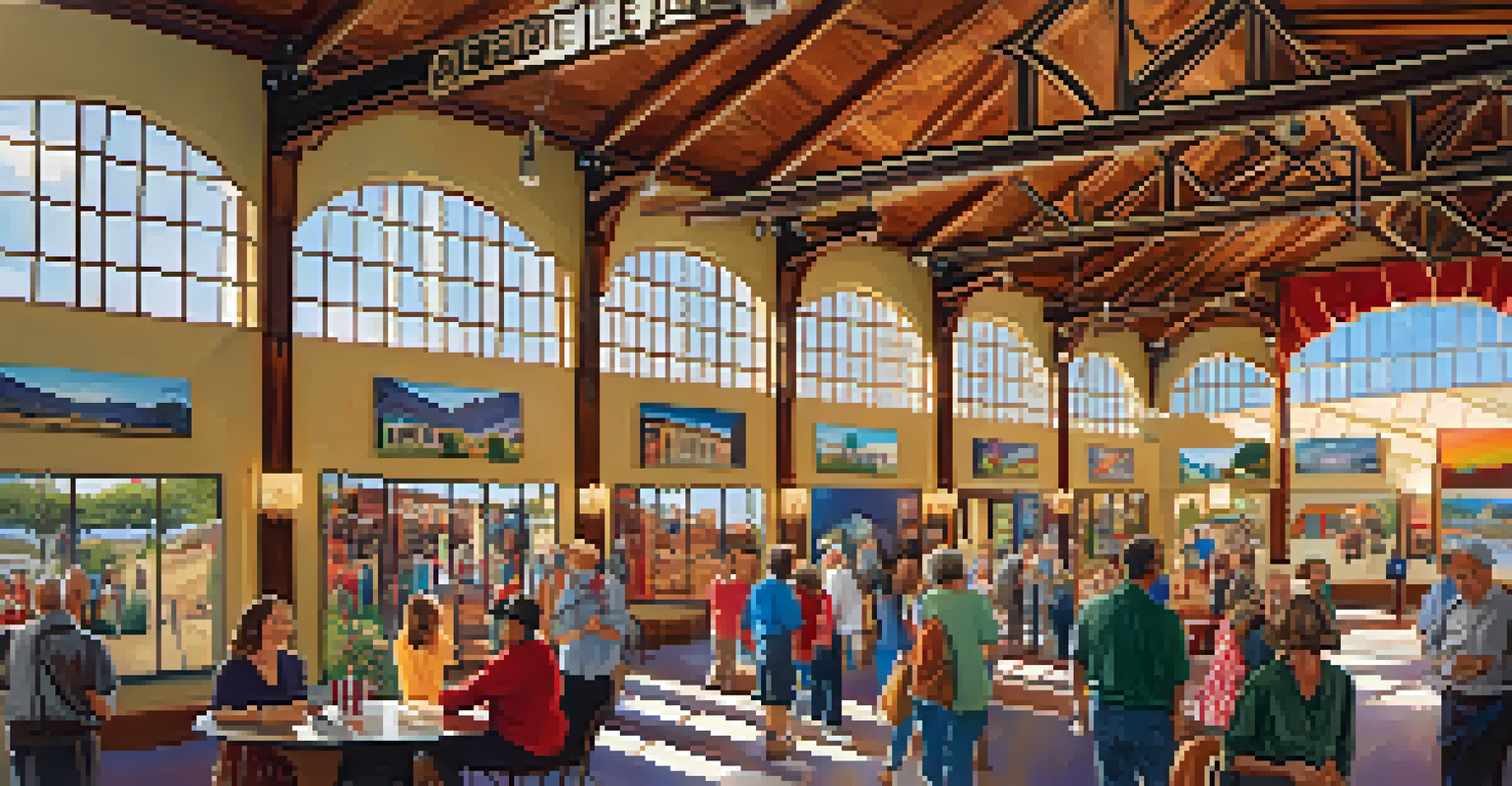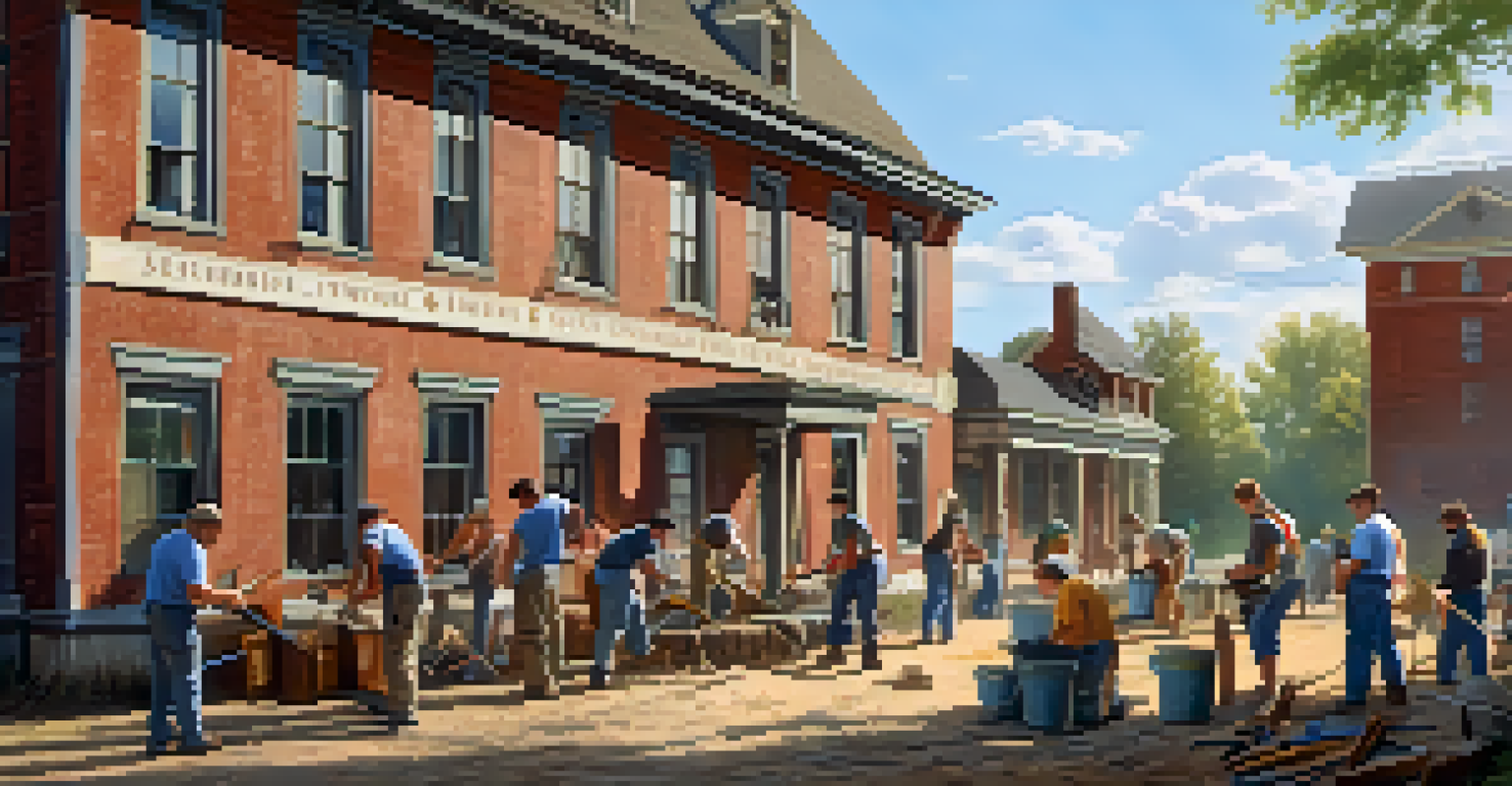Reviving Pasadena's Historic Structures: A Modern Perspective

The Importance of Preserving Historic Structures
Pasadena's historic structures are more than just buildings; they are the soul of the community. These sites tell stories of the city's past, reflecting its cultural and architectural heritage. Preserving them not only honors our history but also enhances the local identity that residents cherish.
Preservation is the foundation of the future, for without knowing where we came from, we cannot truly understand where we are going.
When we think about preservation, we often imagine old bricks and mortar. However, it also involves maintaining the stories, memories, and values tied to these places. By ensuring these structures remain intact, we help future generations connect with their roots and understand their city's evolution.
Moreover, preserving historic buildings can have economic benefits. Tourists are drawn to cities with rich histories, and restoring these sites can boost local businesses. It’s a win-win situation: we protect our heritage while also fostering economic development.
Challenges in Modernizing Historic Buildings
Modernizing historic structures comes with its own set of challenges. Balancing the need for contemporary amenities with the desire to retain original features can be tricky. For instance, adding modern heating and cooling systems without compromising the building's aesthetic integrity requires thoughtful planning.

Additionally, there are often strict regulations governing how these buildings can be modified. Preservation societies and local governments aim to maintain the authenticity of the structures, which can sometimes stall innovative ideas. Navigating these regulations while still achieving modernization can feel like walking a tightrope.
Preserving History Benefits Community
Maintaining historic structures not only honors our past but also enhances local identity and can boost economic development through tourism.
However, these challenges can spark creativity. Architects and developers are increasingly finding ways to blend old and new, creating spaces that respect the past while meeting the needs of the present. This dynamic interplay can lead to unique designs that celebrate both history and innovation.
Community Involvement in Preservation Efforts
Engaging the community is crucial for successful preservation efforts. Local residents often have deep connections to historic structures, making their input invaluable. When communities come together to advocate for these sites, they create a powerful voice that can influence decisions at all levels.
The past is not dead; it is not even past.
Community involvement can take many forms, from attending town hall meetings to participating in restoration projects. For example, volunteer days where locals come together to clean and restore a historic site not only beautify the area but also strengthen community bonds. These shared experiences foster a sense of pride and ownership.
Moreover, educational programs can raise awareness about the significance of preservation. By teaching younger generations about the importance of their heritage, we cultivate future advocates who will continue these efforts. When a community rallies behind its history, it ensures that those structures remain cherished for years to come.
Innovative Approaches to Restoration
Restoration doesn't always mean returning a building to its original state; it can also involve innovative approaches. For instance, adaptive reuse has emerged as a popular method, where old buildings are repurposed for new functions. A former factory might become a trendy loft or a community arts center, breathing new life into the structure.
This approach not only preserves the building but also injects new energy into the community. It creates spaces that serve current needs while honoring the past. The challenge lies in ensuring that the new use aligns with the building's historical significance, but when done right, the results can be stunning.
Modernization Requires Creative Solutions
Balancing contemporary needs with the preservation of original features challenges architects and developers to innovate and respect the building's history.
Technology also plays a role in modern restoration techniques. Advanced methods, such as 3D scanning and building information modeling (BIM), allow for meticulous planning and execution. These technologies help preserve the original details while facilitating necessary updates, ensuring a seamless blend of old and new.
Case Studies: Successful Revivals in Pasadena
Pasadena boasts several success stories in reviving historic structures. One notable example is the restoration of the historic City Hall, which beautifully combines its classic architecture with modern functionality. The meticulous care taken during the renovation has made it a centerpiece of civic pride and a hub for community events.
Another inspiring case is the transformation of the former Santa Fe Depot into a vibrant cultural center. This project not only preserved the building's charm but also created a space for art exhibits and community gatherings. It serves as a reminder that old structures can adapt to new roles while retaining their historical significance.
These case studies illustrate that thorough planning and community support can lead to remarkable outcomes. They show how embracing our history can simultaneously foster innovation and growth within the community. Each successful revival serves as a model for future projects, teaching us valuable lessons along the way.
The Role of Technology in Preservation
In today's digital age, technology plays a pivotal role in preservation efforts. From virtual reality tours that showcase historic sites to digital archives that preserve documents, technology is revolutionizing how we engage with our history. These tools not only enhance public interest but also provide innovative ways to educate and inform.
For example, augmented reality applications can bring historic buildings to life, allowing users to see how they looked in their prime. This interactive experience can deepen appreciation and understanding of the structures' significance. It also attracts a younger audience, bridging the gap between generations.
Community Engagement is Vital
Active involvement of local residents in preservation efforts fosters a sense of pride and ownership, ensuring that historic structures remain cherished.
Furthermore, technology aids in the documentation and analysis of historic structures. Drones and 3D modeling can capture intricate details of a building's architecture, helping preservationists make informed decisions during restoration. By harnessing these advancements, we can ensure that our approach to preservation is both thoughtful and effective.
Looking Ahead: A Vision for Pasadena's Future
As we look ahead, the future of Pasadena's historic structures is bright. With a commitment to preserving our past, we can create a unique blend of history and modernity that defines the city's character. This vision involves not only safeguarding existing structures but also encouraging innovative designs that honor the past.
Community engagement will continue to be essential in shaping this vision. By actively involving residents in preservation efforts, we can ensure that the voice of the community remains strong. Together, we can advocate for policies that protect our historic sites while fostering new developments that complement them.

Ultimately, the goal is to create a city where history and innovation coexist harmoniously. By embracing our heritage and investing in our future, Pasadena can become a model for other cities looking to revitalize their historic structures. The journey ahead is filled with possibilities, and we all have a role to play in making this vision a reality.